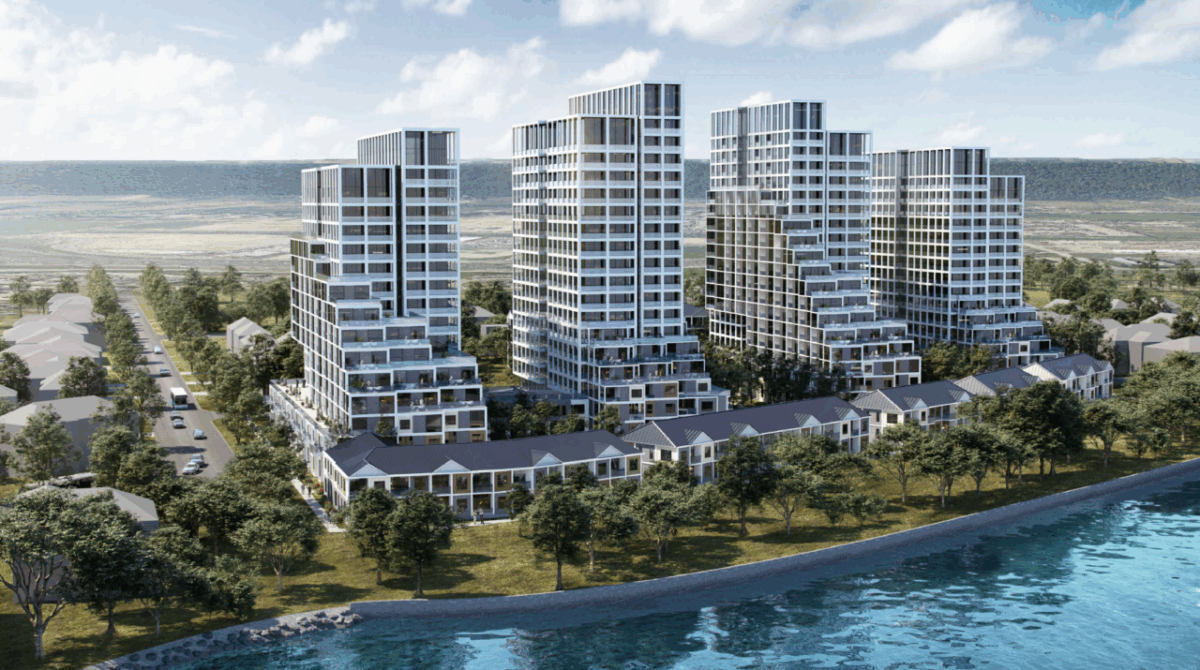Fengate and LiUNA will have to return to the drawing board after the Ontario Land Tribunal ruled against their application to redevelop its Lake Ontario lands at the end of Winona Road in Stoney Creek.
Fengate LiUNA Gardens Holdings LP applied to the City of Hamilton to redevelop the 3.4-hectare property at 526 Winona Road into a residential development with 1,212 residential units anchored by two 24-storey buildings and two 15-storey buildings.
Before City Council could decide on the application, Fengate LiUNA filed a non-decision appeal to the OLT in the hope of gaining approval, notwithstanding the concerns of City planning staff the development could not be serviced by the existing road network and represented overdevelopment of the property.
Proposal Amendments During OLT hearing
During the OLT process, Fengate LiUNA decreased the density and changed the heights proposed in their development, after the City and local residents submitted their initial arguments.
The two 15-storey buildings were lowered to 12-storey each, one of the proposed 24-storey buildings was increased to 26-storeys, and the other 24-storey decreased to 22-storeys.
The townhouses were increased in height to three storeys, while the number of townhouse blocks was decreased from five to four.
The number of planned parking spots increased to 1,420 from 1,067, reflecting that public transit does not service Stoney Creek’s waterfront. The Tribunal ruled this increase provided adequate parking, removing the issue from dispute.
Ontario Land Tribunal Vice-Chair Shannon Braun ultimately agreed with the concerns stated by the City’s experts, and denied Fengate LiUNA’s appeal.
“The Tribunal finds the proposed planning instruments, and the development they would ultimately permit, are not representative of good planning,” she wrote in a 93-paragraph ruling.
Does Not Confirm With Fruitland-Winona Secondary Plan
The Winona Garden’s development proposed a density of 430 units per hectare.
The Fruitland-Winona Secondary Plan‘s most dense zoning is Medium Density Residential 3, which permits a maximum height of nine-storeys and a density of 50-99 units per net residential hectare.
“The Tribunal is not persuaded that intensifying to the level proposed is appropriate on this site and is not convinced that improvements to currently inadequate services and infrastructure will fall into place to meet the needs of such a high-density development,” the Tribunal ruled.
Will Generate Too Much Traffic for Existing Network
The Tribunal determined the City is responsible for upgrading the local transportation network, including upgrading the intersection at North Service Road and Fifty Road, as well as installing sidewalks.
As proposed, the development will create too much traffic for current conditions.
Does Not Conform with Neighbourhood Character
The City’s experts testified the proposal is ‘simply too high and too dense to be compatible with, and appropriately located in, Winona North.’
The neighbourhood is not a growth node, does not have transit service, does not have community facilities, and lacks walkable commercial businesses, they stated.
The Tribunal agreed, finding “the proposed development would be inappropriately placed in, and would not align with, the existing context and planned function for this particular neighbourhood, which does not benefit from robust transit, pedestrian/ active transportation networks or community facilities/services and local commercial uses within a convenient, walkable distance.” [emphasis in original]
Tribunal Upholds Secondary Plan – Points Towards Medium Density as More Appropriate
Vice-Chair Braun wrote, “Notwithstanding that it predates the [current Provincial Policy Statement] and [Growth Plan], the Secondary Plan is still instructive, insofar as it does not include a high density designation and evidences the vision for this community to be characterized by lower density and built forms, at odds with what the Applicant seeks to deploy on this site.”
Production Details v. 1.0.0 Published: April 20, 2024 Last edited: April 20, 2024 Author: Joey Coleman Edit Record v. 1.0.0 original version

